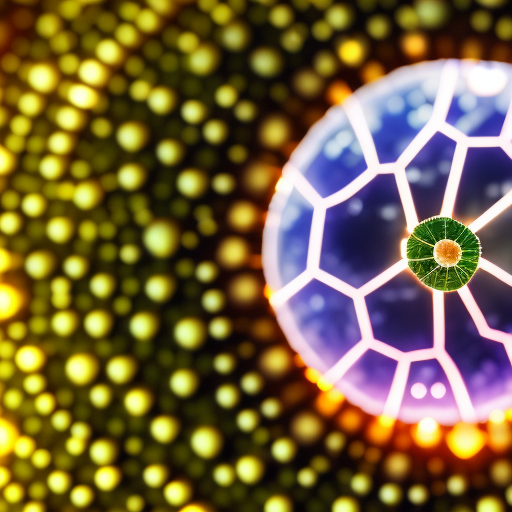UT researchers investigate how freshwater diatoms stay in the light
UT researchers investigate how freshwater diatoms stay in the light EurekAlert


Spring Blooms of Diatoms in Lake Erie Threatened by Declining Ice Cover
image:
Brittany Zepernick
Credit: University of Tennessee, Knoxville
Introduction
Spring weather brings welcome conditions for flowers and plant life to bloom across the land. The right mixture of temperature, moisture, and light helps keep the green world vibrant.
Underwater plant life generally responds to similar environmental encouragements, but a curious discovery in Lake Erie circa 2012 led microbiologists to study an unseasonal display of winter abundance. Blooms of diatoms—microscopic, photosynthetic algae—were alive and well beneath (and within) the lake’s ice cover.
The Role of Diatoms
“Some of the main winter-spring diatom bloom formers, like Aulacoseira islandica, have a symbiotic relationship with heterotrophic bacteria capable of forming tiny ice crystals, which over time causes the diatom filaments to become buoyant—just as ice cubes float in your favorite beverage,” said Brittany Zepernick, a post-doctoral researcher and SEC Emerging Scholar in UT’s Department of Microbiology.
These ‘diatom ice cubes’ float to the Lake Erie ice cover and embed within it, putting them in position to absorb the light needed to perform photosynthesis throughout the winter months. It was good news for diatoms, which are a vital component of the cumulative ecosystem in lakes and oceans across the globe
Threats to Diatoms
This curious adaptation is threatened, though, as warming global temperatures have led to widespread ice decline across the Great Lakes, leaving Lake Erie in a nearly ice-free state in several recent winters and leaving diatoms stuck in murky, light-deprived waters. In these new “climatically uncharted waters,” the adaptations that benefitted these winter diatoms for so long suddenly ceased to serve them.
So, what’s a diatom to do? Zepernick and colleagues turned to the shores of Lake Erie to investigate the evolving situation. With the help of the US and Canadian Coast Guard, they sampled the ice-covered (in 2019) and ice-free (in 2020) winter waters of Lake Erie to learn how diatoms were responding to changing environmental conditions. They recently published their work in the ISME Journal—Multidisciplinary Journal of Microbial Ecology.
Impact on Lake Erie and Sustainable Development Goals
Two main diatom genera dominate the winter blooms: Aulacoseira islandica and Stephanodiscus spp.
“The abundance of Stephanodiscus spp. was approximately 70 percent lower in the ice-free water column of 2020 compared to the ice-covered water column of 2019,” said Zepernick. “Likewise, the abundance of Aulacoseira islandica was around 50 percent lower in the ice-free water column compared to the ice-covered water column.”
With ice cover across the Great Lakes at record lows—from around 80 percent covered in ice in 2018 and 2019 to just 8 percent covered in 2023—researchers expect this trend will continue in future winters.
The next step is studying how this impacts Lake Erie, which joins the other Laurentian Great Lakes of the US and Canada to cumulatively contain approximately 20 percent of the globe’s fresh water.
“Despite the critical importance of this system, we didn’t know diatom blooms even formed in the winter-spring months until around 2012,” said Zepernick. “Many researchers have referred to the winter water column as a ‘New Frontier’ or a ‘black box.’ What we do know is that diatoms are critically important to regional lake ecosystems and global climate.”
The Potential for Adaptation
Diatoms make up an estimated 20 percent of global carbon sequestration and oxygen production, play an enhanced role in global biogeochemical cycles, and represent a critical component of the aquatic ecosystem in freshwater systems.
“Hence, the large-scale changes already underway to the winter-spring diatom communities in Lake Erie and other lakes across the globe will result in large-scale biological and biogeochemical change,” said Zepernick.
The light at the end of the icy tunnel could rely on the diatoms’ potential to adapt. Zepernick’s recent work indicates they could possibly form clusters with adhesive proteins called fasciclins to “raft” to the surface of the muddy waters via “underwater waves” produced by wind, convection, and underwater currents.
Another adaptation Zepernick hinted at was that diatoms could increase their use of proton-pumping rhodopins (PPRs)—light harvesting, retinal-containing proteins that could serve as an alternative to classical photosynthesis. She is currently attempting to isolate freshwater diatoms from Lake Erie samples that possess PPRs to create a model freshwater diatom-PPR system for further study. Her findings could offer clues to the diatoms’ next move in a rapidly changing climate.
“PPRs are a hot topic within marine literature, yet we know very little about how these mechanisms apply to freshwater systems and taxa,” she said. “I am interested in elucidating the benefits PPRs may confer to both freshwater and marine diatoms across a variety of emerging—and future—climatic stressors.”
1. Which SDGs are addressed or connected to the issues highlighted in the article?
- SDG 13: Climate Action
- SDG 14: Life Below Water
- SDG 15: Life on Land
The article discusses the impact of warming global temperatures on diatoms, which are a vital component of the ecosystem in lakes and oceans. This connects to SDG 13, which focuses on taking urgent action to combat climate change and its impacts. The decline in ice cover in Lake Erie also affects the winter diatom communities, highlighting the importance of SDG 14, which aims to conserve and sustainably use the oceans, seas, and marine resources. Additionally, diatoms play a critical role in the aquatic ecosystem, linking to SDG 15, which focuses on protecting, restoring, and promoting sustainable use of terrestrial ecosystems.
2. What specific targets under those SDGs can be identified based on the article’s content?
- Target 13.1: Strengthen resilience and adaptive capacity to climate-related hazards and natural disasters
- Target 14.1: By 2025, prevent and significantly reduce marine pollution of all kinds
- Target 15.1: By 2020, ensure the conservation, restoration, and sustainable use of terrestrial and inland freshwater ecosystems and their services
The article highlights the need to strengthen resilience and adaptive capacity to climate change impacts on diatoms (Target 13.1). It also emphasizes the impact of declining ice cover on diatoms in Lake Erie, which relates to the target of preventing and reducing marine pollution (Target 14.1). Furthermore, the article emphasizes the importance of conserving and restoring freshwater ecosystems, including the diatom communities in Lake Erie (Target 15.1).
3. Are there any indicators mentioned or implied in the article that can be used to measure progress towards the identified targets?
Yes, the article mentions several indicators that can be used to measure progress towards the identified targets:
- Indicator for Target 13.1: Resilience and adaptive capacity of diatoms to changing environmental conditions
- Indicator for Target 14.1: Abundance of diatoms and other marine organisms in ice-covered and ice-free water columns
- Indicator for Target 15.1: Abundance and diversity of diatoms in Lake Erie
The article discusses the changes in diatom abundance and community composition in response to changing environmental conditions, which can be used as an indicator for measuring resilience and adaptive capacity (Target 13.1). The abundance of diatoms in ice-covered and ice-free water columns can serve as an indicator for measuring marine pollution (Target 14.1). Additionally, monitoring the abundance and diversity of diatoms in Lake Erie can be used as an indicator for measuring the conservation and restoration of freshwater ecosystems (Target 15.1).
4. Table: SDGs, Targets, and Indicators
| SDGs | Targets | Indicators |
|---|---|---|
| SDG 13: Climate Action | Target 13.1: Strengthen resilience and adaptive capacity to climate-related hazards and natural disasters | Resilience and adaptive capacity of diatoms to changing environmental conditions |
| SDG 14: Life Below Water | Target 14.1: By 2025, prevent and significantly reduce marine pollution of all kinds | Abundance of diatoms and other marine organisms in ice-covered and ice-free water columns |
| SDG 15: Life on Land | Target 15.1: By 2020, ensure the conservation, restoration, and sustainable use of terrestrial and inland freshwater ecosystems and their services | Abundance and diversity of diatoms in Lake Erie |
Behold! This splendid article springs forth from the wellspring of knowledge, shaped by a wondrous proprietary AI technology that delved into a vast ocean of data, illuminating the path towards the Sustainable Development Goals. Remember that all rights are reserved by SDG Investors LLC, empowering us to champion progress together.
Source: eurekalert.org

Join us, as fellow seekers of change, on a transformative journey at https://sdgtalks.ai/welcome, where you can become a member and actively contribute to shaping a brighter future.







